Not just Boracay...
15 of the World’s Most Beautiful Mosques
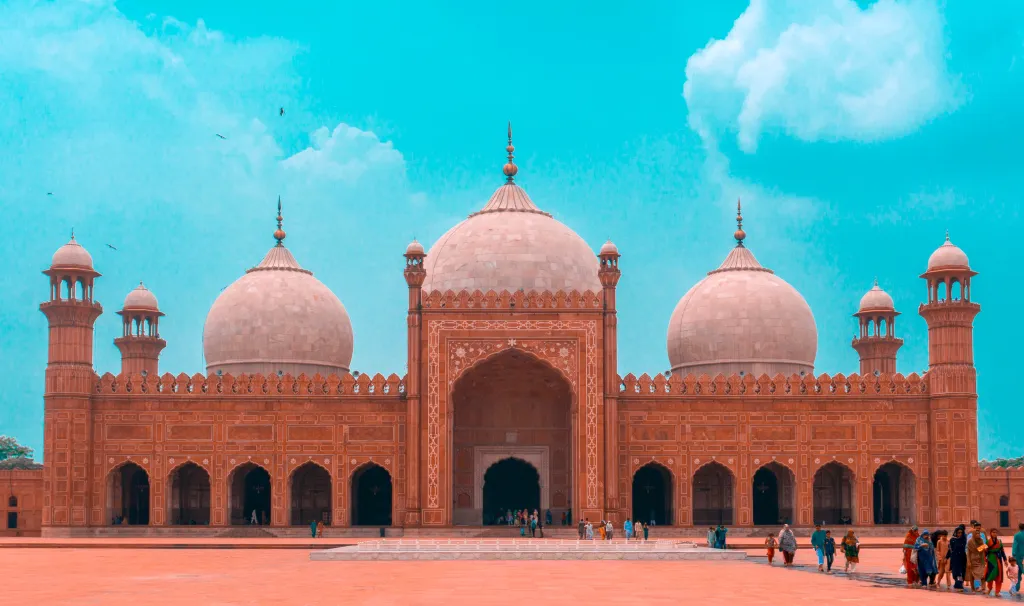
“The Mosque is the architecture which unites the Muslims and their efforts. It refines their souls and awakens their minds and hearts. It solves their problems. The Mosque shows their strength and cohesiveness. ”
As one of the holiest and most beloved buildings in Islam, the mosque is the great symbol of unity and faith for the Muslim community. More commonly referred to in Arabic as masjid, the mosque also acts a venue where Muslims gather to perform prayers, seek Islamic knowledge, attend Friday sermons and Al-Quran classes, celebrate Hari Raya, as well as unite two soulmates in a marriage (Nikah).
Besides being the spiritual and communal nexus for Muslims, mosques are renowned for their exquisite architecture which combines culture and faith into a single masterpiece. Some cultures have even elevated mosque-building to an art form – some mosques are so stunning that it’s hard not to stop what you are doing and just marvel at them from a distance!
Here are 15 absolutely spectacular mosques that’ll have you gawking at them for hours:
1. Sheikh Zayed Grand Mosque, Abu Dhabi, UAE
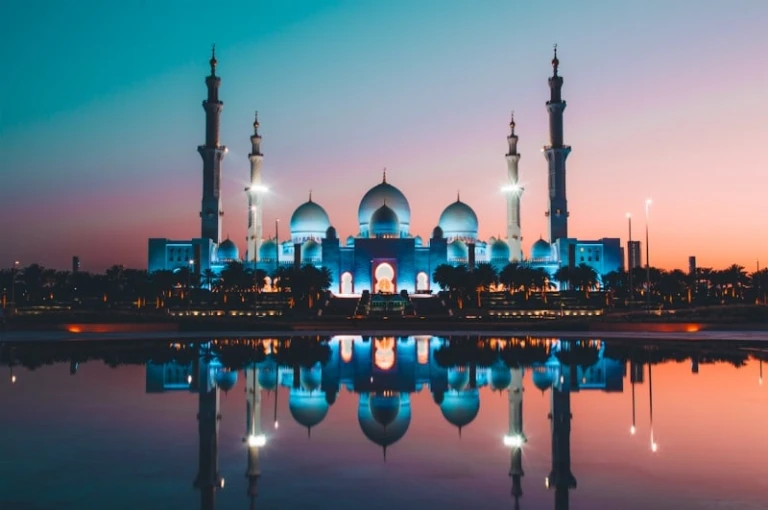
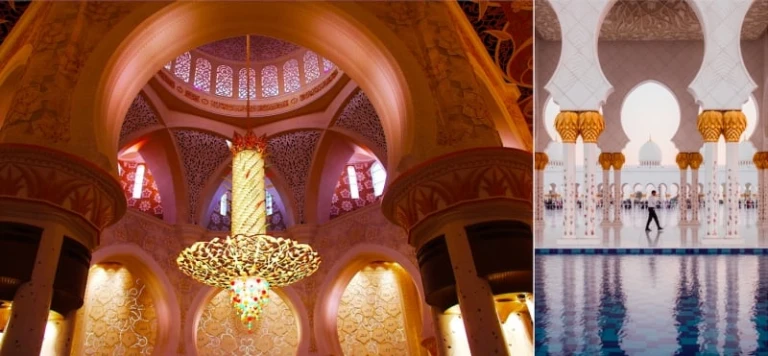
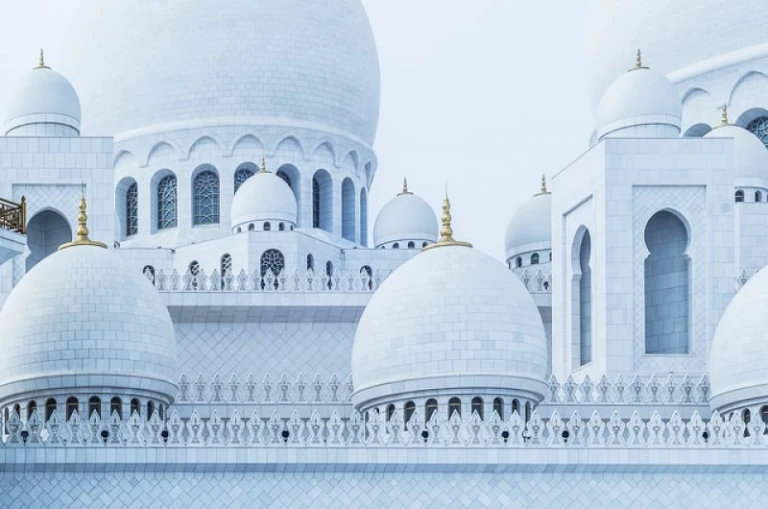
The largest mosque in the UAE, Sheikh Zayed Grand Mosque fuses both modern and classic Islamic architectures in a symbolic theme of unity and diversity. Shiekh Zayed Grand Mosque draws its inspiration from older, equally-famous mosques, such as the Mosque of Abu al-Abbas al-Mursi Mosque in Egypt, and Badshahi mosque in Pakistan. (And what do you know – these two mosques are also on this list!)
This motif of “uniting the world” isn’t just restricted to the design of the mosque itself – the materials and artisans also hail from every corner of the world!
Fun Fact: The Sheikh Zayed Grand Mosque also contains the world’s largest carpet!
2. The Great Mosque of Xi’An, China

A personal favourite among all in this list, the Great Mosque of Xi’An is not only a remarkable structure in its design but also in its representation of Islamic diversity
The Great Mosque of Xi’An was built during the Tang Dynasty, a period when Islam was introduced in China through the coming of Arabian merchants.
Its early presence in history has made it one of the most renowned and oldest mosques. The mosque is a perfect combination of Chinese architecture and Islamic art, with its oriental pavilions and courtyards decorated with Islamic inscriptions and Quranic verses.
Fun Fact: Although it was built during the Tang Dynasty, several additions were made to the mosque during Song (960-1279), Yuan (1271-1638), Ming (1368-1644), and Qing (1644-1911) dynasties, making it representative of the various architecture styles from different periods of time.
3. Jawab Masjid, Agra, India
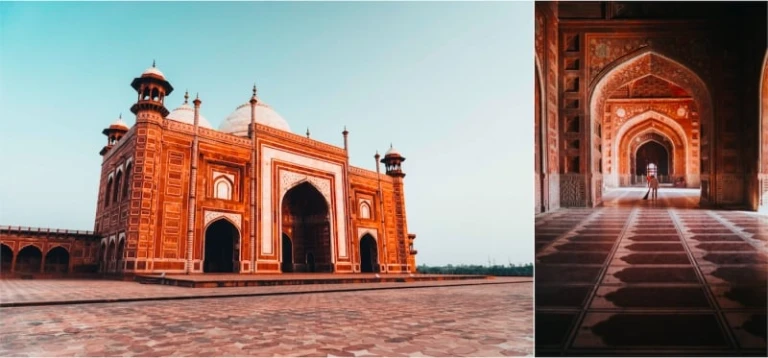
As one of the Seven Wonders of the World, the Taj Mahal is the crown of India that is always under the spotlight. But did you know that this iconic ivory-white mausoleum complex, a UNESCO Heritage Site, also houses a magnificent mosque known as Jawab Masjid?
Commissioned by the Mughal emperor, Shah Jahan, this exquisite mosque is clothed in the most perfect blend of Indian, Persian and Islamic architectural influences! It was during the rule of the Mughals between mid-16th to the late 17th century that Islamic architecture was born in northern India.
The Jawab Masjid mostly comprises of red sandstone with white marble inlaying its interior walls and dome. Step into this religious sanctuary through one of its three cusped arched known as the Iwan and be blown away by the intricate patterns and detailing adorning every inch of the mosque!
Fun Fact: The marble floor of the mosque is designed to resemble rows after rows of prayer mats, 569 to be specific!
4. Pink Mosque (Nasir ol Molk Mosque) in Shiraz, Iran
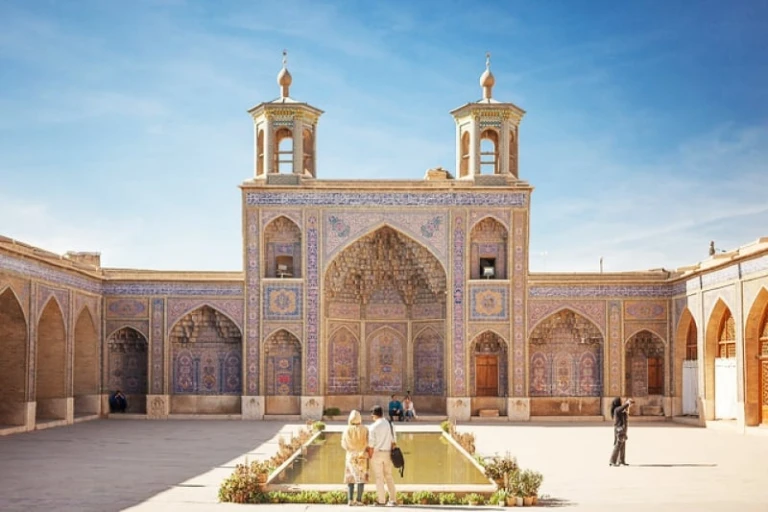
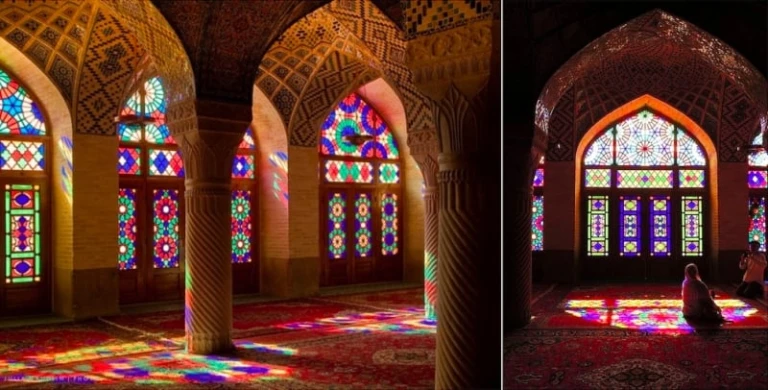
From the outside, the Nasir ol Molk mosque, also known as the Pink Mosque, seems to be just another beautiful mosque in Iran, with an elegant design common among the country’s mosques. However, there is more than meets the eye for this mosque – which you will only know once you step through its graceful arches.
As you enter the building’s interior, be surprised by a kaleidoscope of colours that dance around on the floor, walls, and the ceilings of the mosque! The coloured artistry of the Nasir ol Molk mosque is influenced by the Ottomans, a powerful Turkish Empire and pioneers of Iznik pottery.
Fun Fact: The mosque took a whopping 12 years to complete!
5. Shah Mosque, Esfahan, Iran
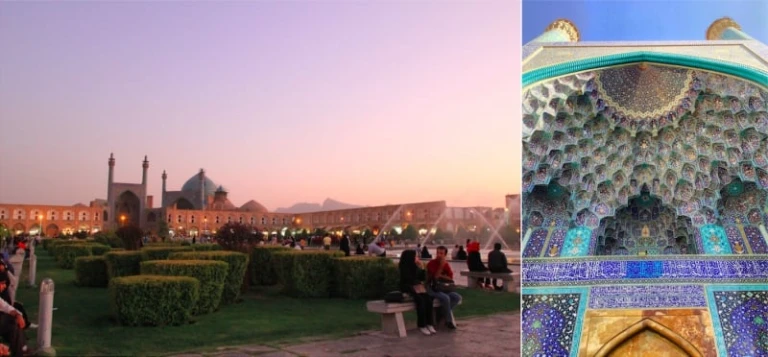
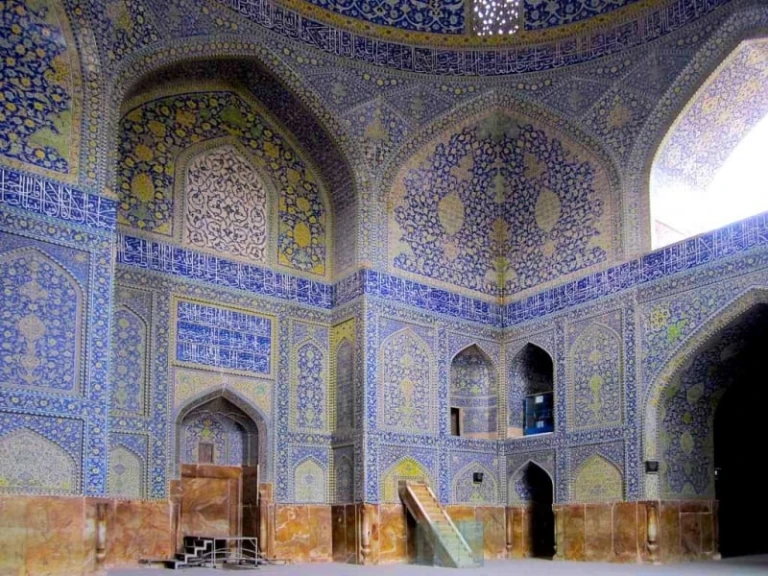
The epitome of Iranian Islamic and Persian architecture, Shah Mosque is decorated with blue mosaics inscribed with Islamic calligraphy and detailed stone carvings and patterns. This UNESCO World Heritage Site was featured in BBC Documentary ‘Around the World in 80 Treasures’ and has the largest dome in the entire city of Esfahan. The dome is not just for aesthetics – it magnifies the imam’s voice so much that it can be heard everywhere in the building!
Fun Fact: Shah Mosque comprises of 18 million bricks and 475,000 tiles!
6. Sultan Ahmed Mosque, Istanbul, Turkey
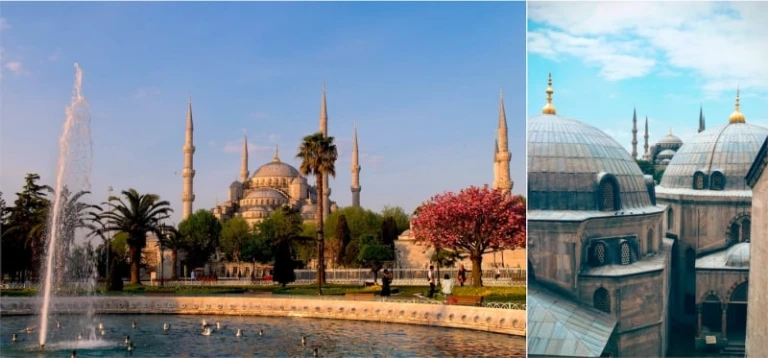
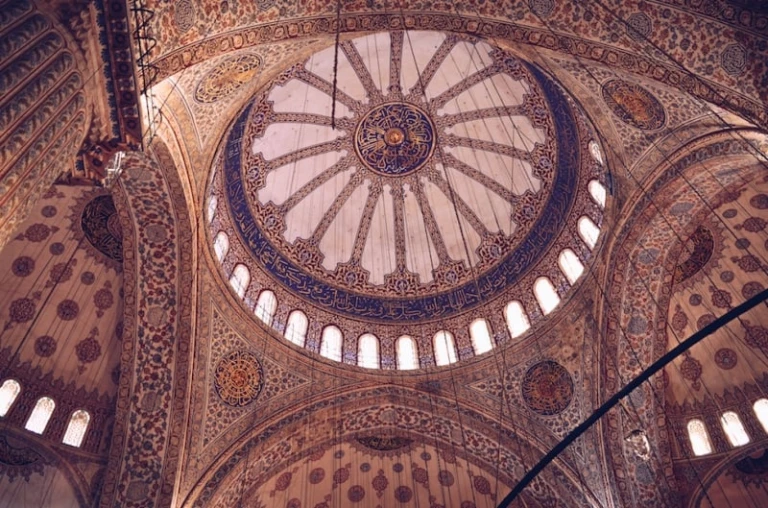
In the city centre of Istanbul stands Sultan Ahmed Mosque, also known as the Blue Mosque. Built in honour of a young Turkish King (after whom the mosque is named after), the Blue Mosque is a beautiful representation of classical Ottoman architecture.
With its massive structure and 6 piercing minarets, Sultan Ahmed Mosque dominates the skyline in Istanbul. The interior walls of the mosque are lined with over 20,000 Iznik tiles in traditional motifs of cypress trees, tulips and roses. The mosque also houses a madrasah (religious institution), bazaar, soup kitchen, primary school and a royal tomb, making this mosque one of its kind in Istanbul.
Fun Fact: In ancient times, the Blue Mosque competed with the Hagia Sophia for the recognition of the most magnificent building in Istanbul. At present, both are equally appreciated and cherished by all.
7. Hassan II Mosque, Casablanca, Morocco
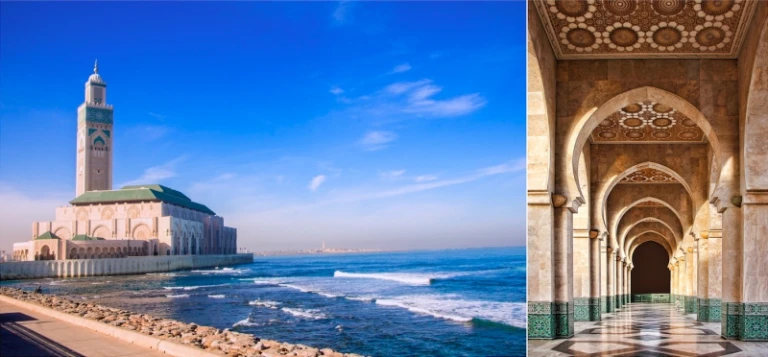
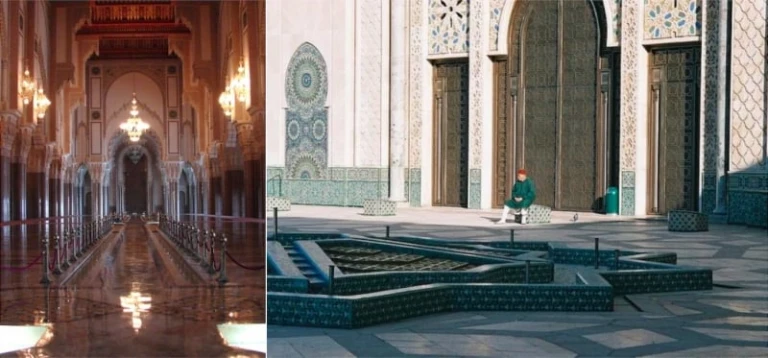
It is undisputed that Morocco’s best architectural wonder has to be Hassan II Mosque in Casablanca. Constructed by Moroccan stone and wood carvers, this splendorous mosque stands out from the rest of Casablanca.
Additionally, the minaret of Hassan II Mosque is the tallest structure in Casablanca as well as the tallest minaret in the world! The mosque is also built on a platform which juts out over the Atlantic Ocean. Interestingly, part of the mosque’s floor is made out of glass, allowing its worshippers to kneel directly over the sea.
Fun Fact: The dramatic location of Hassan II Mosque is a poetic reflection of a verse found in the Quran: “God built his throne upon the water.”
8. Badshahi Mosque, Lahore, Pakistan
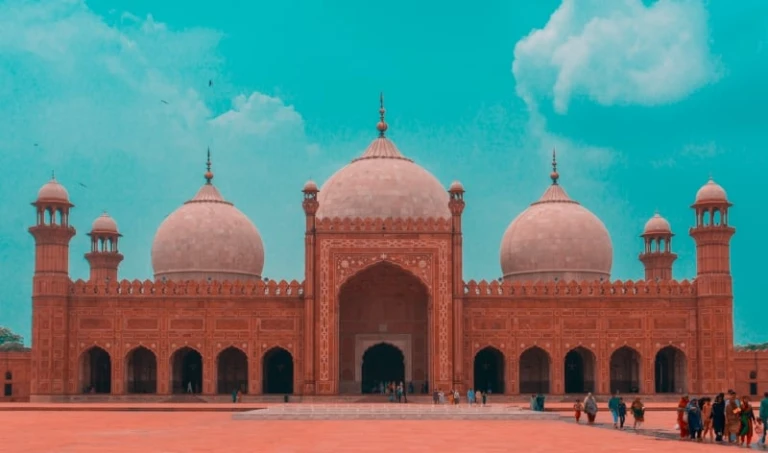

Built in the image of beauty and grace, Badshahi Mosque is the major attraction in Lahore. Heavily influenced by Indo-Greek, Central Asian and Indian architecture, this mosque is covered by stone carvings with white marble inlays on red sandstone.
As one of most significant accomplishments of the Mughal Empire, Badshani Mosque was also the largest mosque in the world for centuries.
Fun Fact: The mosque has the capacity to hold 60,000 worshippers with its courtyard being able to accommodate 100,000! This makes the Badshahi Mosque the 2nd biggest mosque in terms of capacity!
9. Mosque of Muhammad Ali, Cairo, Egypt
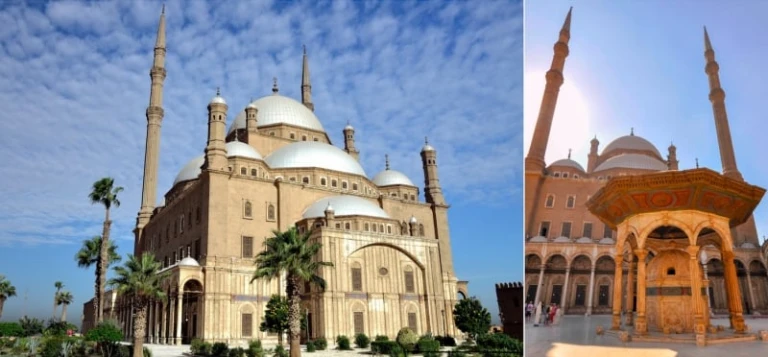
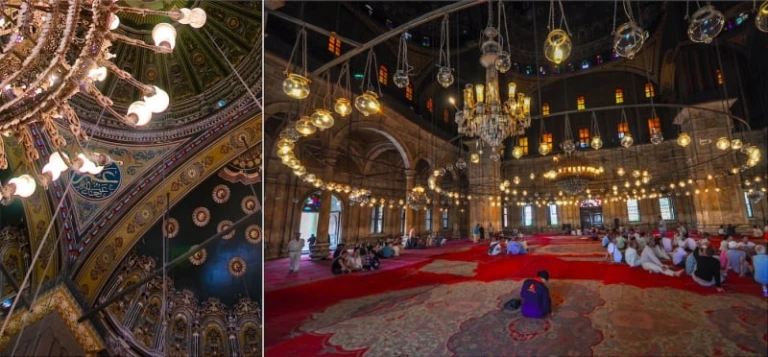
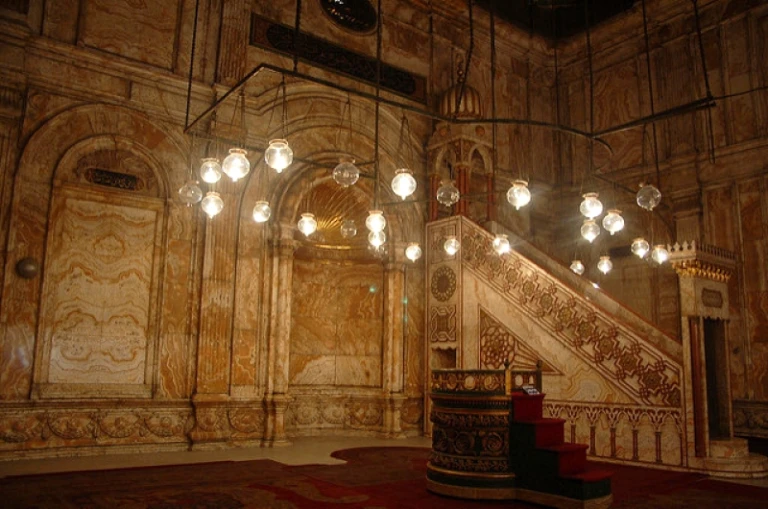
A masterpiece of the Turks, the Mosque of Muhammad Ali in the Citadel of Cairo has been dominating the skyline for over 150 years. This mosque blends both classic Ottoman architecture with French Rococo influence, an art style featuring elaborate ornamentation, pastel colours and curved or serpentine lines.
As you enter the mosque, look upwards at the hanging globes of lamps that resemble a constellation. Thereafter, admire the cascading domes with its exquisite designs engraved on its ceilings – the interior decoration of this mosque is unparalleled.
Fun Fact: The Mosque of Muhammad Ali is the most visited mosque in all of Egypt!
10. Sultan Qaboos Grand Mosque, Muscat, Oman
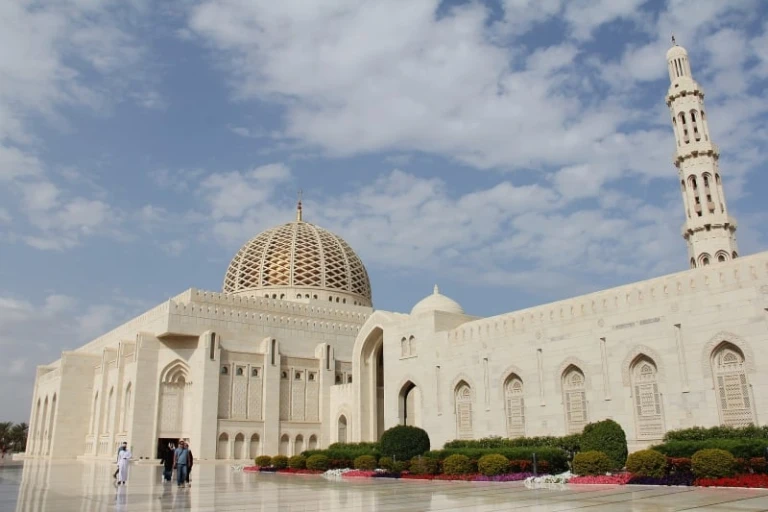
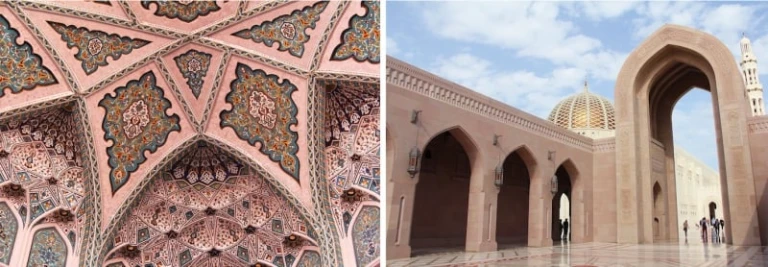
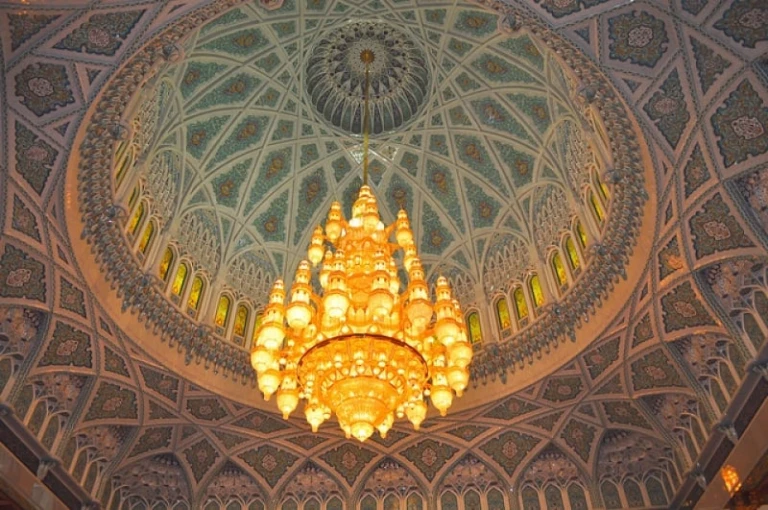
For one of the grandest mosques in the world, check out the Sultan Qaboos Grand Mosque. The mosque exudes an air of royal dignity in every detail of its modern Islamic architecture style, as befitting its stature as the main mosque in Oman.
In the centre of the male prayer hall, you can spot a massive chandelier holding 600,000 Swarovski crystals and plated with pure gold. The mosque also hosts an impressive library containing a collection of over 20,000 books!
Fun Fact: Sultan Qaboos Grand Mosque has the 2nd largest hand-loomed Iranian carpet in the world. It took 600 women and 4 years to weave!
11. Great Mosque of Djenne, Mali
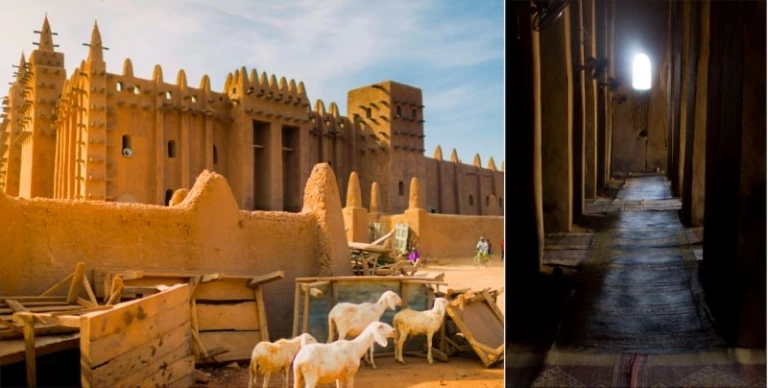
Image credit: (top) Göran Höglund Kartläsarn (bottom) JM
Embellishing the skyline of a town in Mali is the Great Mosque of Djenné. Devoid of domes but riddled with Rodier palm sticks poking out of the walls, this grand mud structure is an exemplary architecture influenced by the African style. Although built in 1907, the mud architecture which can be seen adopted in many areas of Mali dates back to the 14th century.
Mudmasons make use of bricks made of straw mixed with mud to build the mosque and plaster the walls smooth with more mud to bake under the sun. The sturdy and sprawling mosque has the capacity to hold 3,000 worshippers. Despite the vastness of the mosque and its ancient architecture, the Great Mosque of Djenné has seen minimal technological upgrade including the loudspeaker system and indoor fans. Truly a dedication to preserving the historical integrity of the mosque!
Fun Fact: Although the mosque stands strongly, the mud can be vulnerable to the elements. Thus, community members come together once in a while to replaster the mosque walls with mud when cracks start to appear.
12. Mezquita, Cordoba, Spain
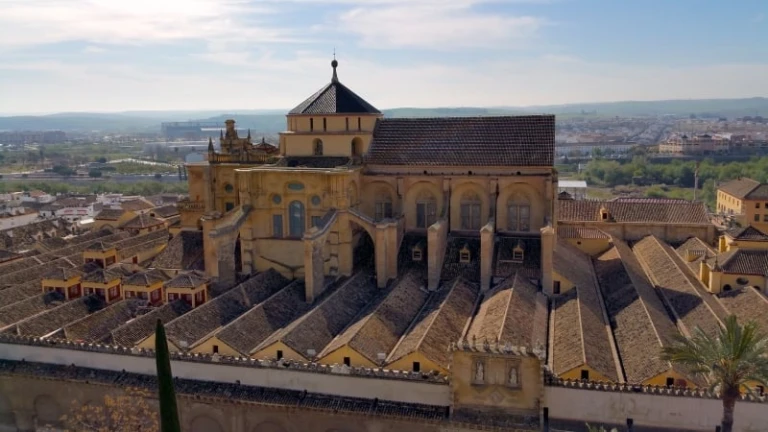

Okay, this may not be a functioning mosque. But its historical and cultural significance is definitely worth mentioning! The Mezquita, located in Cordoba, is one of the most accomplished Islamic architectures by the Moors, who took control of the Andalusia region in Spain.
What was once a Visigothic Catholic Church was bought sectionally by Muslim leaders over time to construct the Great Mosque. When Cordoba returned to Christian rule in 1236, the building was converted into a Roman Catholic church, with a 16th-century cathedral plonked in the middle of the mosque grounds! Hence, the Mezquita is also referred to as the Mezquita-Catedral.
Immerse yourself in the elements of both the mosque and the cathedral at the Mezquita as you take a stroll around the beautiful courtyard or the sprawling prayer hall. Marvel at the intricately designed mihrab and multicoloured motifs that decorate the mosque. Or walk the grounds of the cathedral adorned with Spanish Baroque and Renaissance inspired style covering the interior!
Fun Fact: Spanish Muslims have lobbied since the 2000s to allow them to pray on the grounds of the Mezquita, but have been rejected several times by the Spanish church authorities and the Vatican.
13. Masjid Selat Melaka, Melaka City, Malaysia
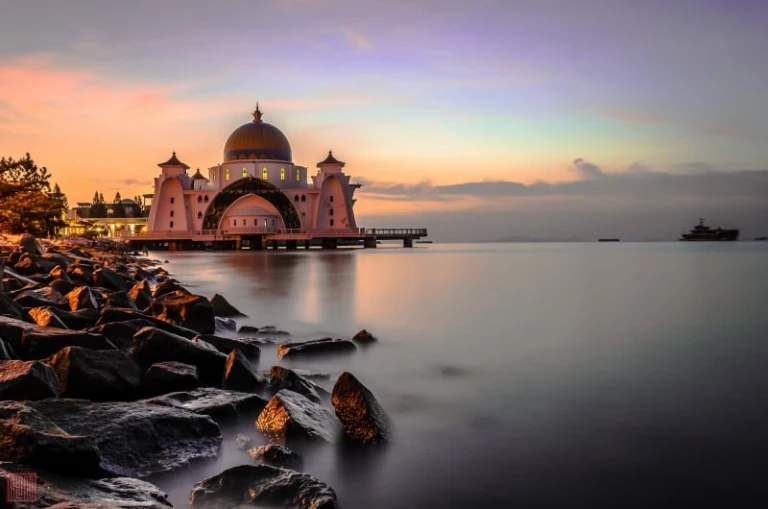
Masjid Selat Melaka, also known as the Melaka Straits Mosque, is located in Melaka City in Malaysia. This gem sits on the man-made Melaka Island that extends away from the land and doubles up as a lighthouse, guiding nearby ships and even aircraft!
Admire the pearl white walls of the mosque topped with a golden dome beautifully illuminated with the colours of the setting sun. Marvel at the stained-glass archway that welcomes patrons into the mosque. Incorporating teakwood and bamboo materials into its structure, Masjid Selat Melaka also integrates both Middle Eastern and Malay architectural styles on its body!
Fun Fact: When the tide rises to cover the base of the structure, the mosque looks like it’s floating on the water!
14. Jami-Ul-Alfar Mosque, Colombo, Sri Lanka
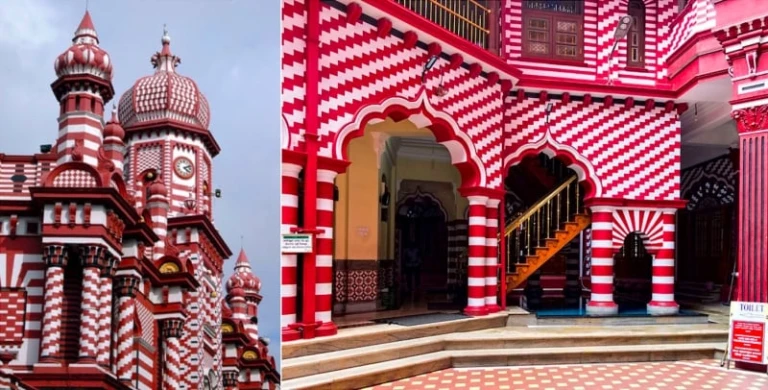
Decked with stripes of red and white, this unique architecture easily stands out in the crowded streets of Colombo, Sri Lanka. This towering candy-like mosque was built in 1909, commissioned1 by South Indian Muslims who saw the need for an Islamic place of worship in Colombo.
Also known as the Red Mosque, Jami-Ul-Alfar Mosque’s beauty draws inspiration from Indo-Islamic and Indian designs fused with elements of Gothic Revival and Neo-Classical styles. Additionally, the mosque also deviates from the normal onion-shaped domes with its pomegranate-shaped domes. All in all, this magnificent architecture is truly a spectacular sight in busy Colombo!
Fun Fact: In the days of old, Jami-Ul-Alfar Mosque was once identified as the landmark of Colombo for sailors approaching the port.
15. Po-i-Kalyan Complex, Bukhara, Uzbekistan
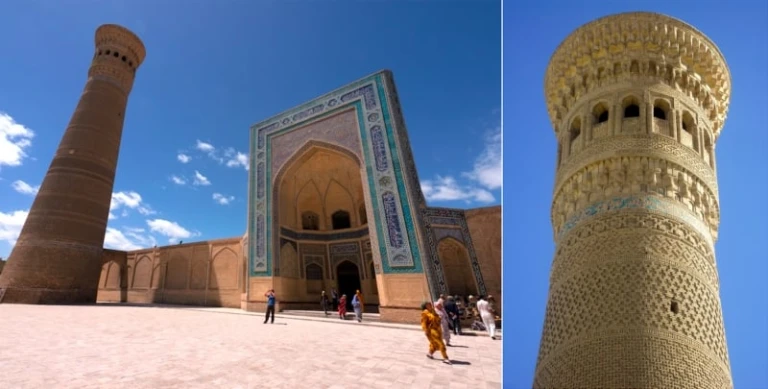
The old city of Bukhara, Uzbekistan, is home to the architectural splendour of Po-i-Kalyan Complex, located in the main Registan Square. The complex covers the grounds of three of its resident structures – the Kalyan Minaret, Kalyan Mosque and Mir-I Arab Madrasah.
The Kalyan Minaret, the oldest monument in the complex, was erected in 1127 and towers at a whopping 46.5m in height! Constructed purely with fired bricks, every inch of the minaret is intricately designed with some portions decorated with blue trimmings. The top of the minaret, where once the muezzin called out for prayer, is now accessible to tourists as well. One can marvel at the vast beauty of Bukhara from the summit of the Kalyan Minaret!
The Kalyan Masjid, established in 1514, features the traditional Timurid architectural styles with its rectangular layout. The main entrance stands grandly on the eastern side of the mosque covered in mosaic patterns and detailed with Quranic inscriptions. The mosque’s main building is also coupled with two large blue domes and the inner yard complete with 288 domes and 208 pillars! When in Bukhara, this luxurious edifice is definitely not to be missed!
Fun Fact: The Kalyan Minaret was also known as the Tower of Death as criminals were once thrown down from the top of the minaret as a punishment!
Published at
About Author
HalalZilla
Subscribe our Newsletter
Get our weekly tips and travel news!
Recommended Articles
10 Best Halal-Friendly Destinations in The Philippines for Muslim Travellers 10 Best Places for Muslim Travellers to See Tulip Festivals in 2025 Fun Fact: Tulips didn’t actually come from the Netherlands but Türkiye!
10 Halal Anime Food Guide for Muslim Travellers in Japan Muslim-friendly versions of popular anime dishes across Japan!
Top 10 Popular Muslim-Friendly Destinations to Visit in 2025 Our schedules are packed, buddies!
10 Halal Logos in ASEAN That Every Muslim Traveller Needs to Know Look for these logos before you EAT!
Latest Articles
Upin & Ipin Theme Park is Coming to Genting Highlands in 2026 An immersive world inspired by Upin & Ipin’s storytelling!
11 Magical Winter Spots in Kyoto, A Cultural and Historical Guide for Muslim Travellers Get ready to witness the city’s rich history and culture blanketed in white.
South Korea Extends K-ETA Exemption Until 2026: What Muslim Travellers Need to Know K-ETA exemption extended for 67 countries
15 Unmissable Winter Festivals in Japan for 2026: A Muslim Traveler’s Guide Planning a trip to Japan's snow festivals? Here are the best events and how to enjoy them as a Muslim traveller.
10 Lau Pa Sat Halal Food Gems: From Michelin to Local Favorites Your ultimate guide to the best Halal eats inside Singapore's iconic hawker center.

